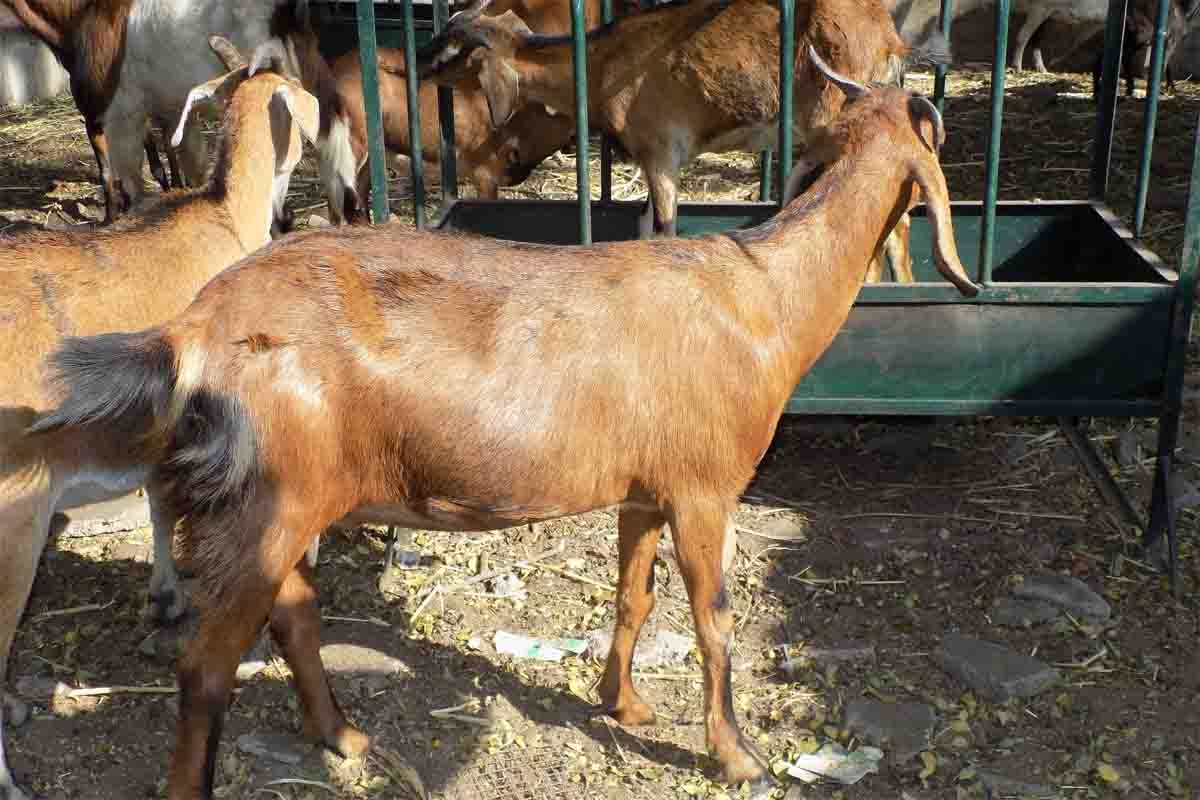.Selection of Breed
Choose the Right Breed- Select breeds that are well-suited to your region’s climate and purpose (meat, milk, or fiber). Popular breeds in India include-
- Meat- Boer, Black Bengal, Osmanabadi.
- Milk- Sirohi, Jamunapari, Beetal.
- Dual-purpose- Barbari, Tellicherry.
Health and Genetics- Ensure the goats are healthy, disease-free, and have good lineage.
Housing and Shelter
- Ventilation- Provide well-ventilated, dry, and clean housing to avoid respiratory diseases.
- Space- Allocate at least 10-15 square feet per goat.
- Flooring- Use elevated flooring (bamboo or wooden planks) to keep the area dry.
- Protection- Protect goats from extreme weather and predators.
- Nutrition and Feeding
- Balanced Diet- Feed goats a balanced diet that includes green fodder, dry fodder, and concentrates.
- Green Fodder- Napier grass, Berseem, Lucerne.
- Supplements- Add mineral mixtures and salt licks to the diet.
- Grazing- Allow goats to graze for 4-6 hours daily if pastureland is available.
- Clean Water- Provide fresh, clean drinking water at all times.
- Breeding Practices
- Breeding Management- Ensure proper timing for mating. The ideal breeding age for goats is 8-10 months.
- Estrus Observation- Identify heat signs like tail wagging, swelling, and discharge.
- Improved Techniques- Use natural breeding or artificial insemination for quality offspring.
- Disease Management
- Vaccination– Follow a vaccination schedule for common diseases like PPR, Enterotoxemia, and Foot and Mouth Disease.
- Deworming- Conduct regular deworming to control internal parasites.
- Hygiene- Maintain hygiene in housing, feeding, and watering to prevent diseases.
- Quarantine- Isolate new or sick animals to prevent disease spread.
- Record Keeping
- Maintain records of-
- Breeding and kidding dates.
- Maintain records of-
- Vaccinations and medical treatments.
- Feed and production costs.
- Sales and profit margins.
- Market Strategy
- Understand Demand- Research local markets for meat, milk, or value-added products (cheese, manure).
- Direct Selling- Explore selling directly to consumers to increase profit margins.
- Value Addition- Consider processing milk into cheese or yogurt and packaging manure as organic fertilizer.
- Sustainable Practices
- Waste Management- Use goat manure as organic fertilizer or for biogas production.
- Water Conservation- Employ water-saving methods for cleaning and fodder irrigation.
- Integration- Combine goat farming with other agricultural activities, such as crop production, for mutual benefits.
- Financial Planning
- Initial Investment- Budget for land, housing, feed, and purchasing goats.
- Government Schemes- Avail subsidies and loans provided by the Indian government for livestock farming.
- Insurance- Insure your livestock against diseases, accidents, and natural calamities.
- Training and Networking
- Skill Development- Attend workshops or training programs in goat farming.
- Networking- Join local farmers’ groups or cooperative societies for shared resources and knowledge.

